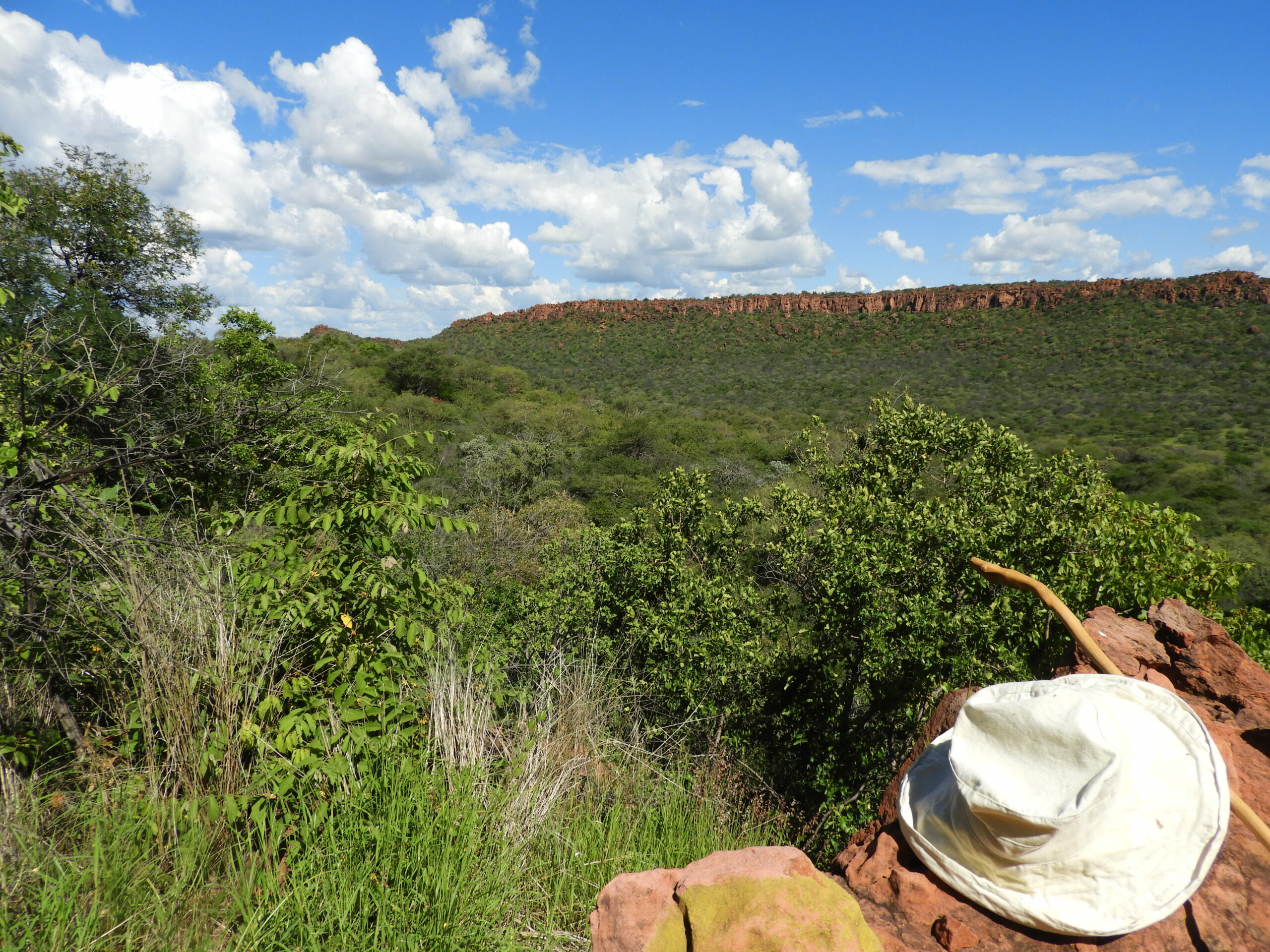Information boards along the trails to the spring of Waterberg Wilderness tell you more about the flora found in the area. We invite you to come and explore this “botanical garden” yourself. The following newsletter is a sneak preview of what awaits you.
500 plant species
With over 500 plant species from approx. 79 genera, there is a lot to explore for nature lovers. However, there is no endemic species, i.e. a plant that only occurs at the Waterberg. The most represented genus is that of grasses (Poaceae) with around 80 species.
The composition of the plants differs depending on their location: plateau, mountain slope, spring area, valley and plain. The plateau is the south-westernmost distribution area of tree savannah and dry forest. Valley and plain are shaped by the thorn bush savannah. Mountain slopes and areas in the vicinity of springs both have their own special mix of plants.
Thorn bush savannah
The thorn bush savannah in the valley and at the foot of the mountain is dominated by black-thorn acacias (Acacia mellifera), better known in Namibia under the Afrikaans name Hakies (-bos). The hakies usually start to flower in August / September. The cream-coloured blossoms are the first heralds of spring.
In the thorn bush savannah you also find camel thorns (Vachellia erioloba), the most famous trees in Namibia. You can recognise them by their grey, auricle-shaped and slightly furry pods.
Flora mix on slopes
On the rocky slopes Omuparara trees (weeping wattle, Peltophorum africanum) catch the eye. Leaves and especially the yellow flowers are a popular food source for many animals, mostly baboons and kudu.
The rock-splitting fig (Ficus ilicina) also sticks out, with its bright stem clinging to the rocks. Its roots grow into the finest rock cracks and draw mosaic-like patterns on the rock walls.
Flora mix at springs
Due to the inclination of the mountain layers, springs are found almost exclusively on the south-western slope of the Waterberg. Ferns and large trees thrive in their surroundings, including mighty sycamore figs (Ficus sycomorus).
Since there is enough water available all year long, alien plants also thrive. Above all, the popular ornamental plant “spanish flag” (Lantana camara) spreads rapidly and can become rampant. More on this in a previous newsletter from September 2021: #projectdragonfly (can be viewed here: https://one-namibia.com/en/projectdragonfly/).
There is no clear boundary between the vegetation groups. The zones overlap, especially in the upper valley area. Our nature trails to the spring therefore offer a unique botanical experience. Visit us at Waterberg Wilderness and enjoy exploring our “Botanical Garden”!
Stay tuned – in the next issue of our newsletter we will introduce you to some of the trees in more detail.
Lush vegetation on the prominent rock edge.




